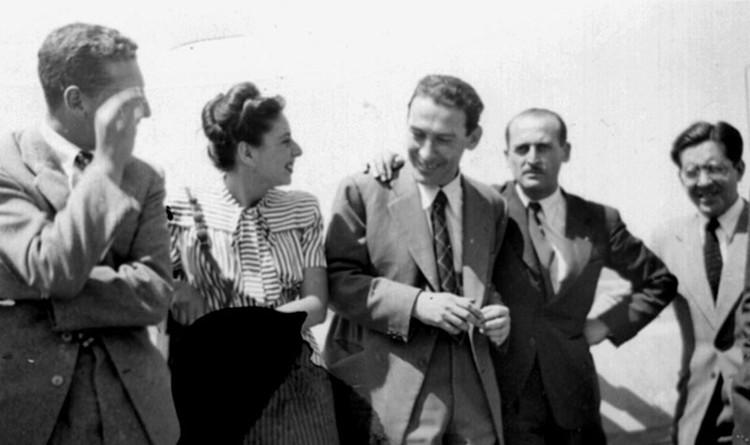
Education is changing fast all over the world. In recent decades, a great number of small local initiatives focused on the individual person, pursuing creativity, curiosity and diversity, have been disrupting through the secular traditional model of education. We have also seen an increasing number of online initiatives which expand access to knowledge to people who didn't have it before - the only requirement is a computer with internet. And the best of it: most of them are open and free. But what about architectural education? Has it experienced the same transformation?
In partnership with Radical Pedagogies, an ongoing multi-year collaborative research project led by Beatriz Colomina with a team of PhD students of the School of Architecture at Princeton University, we will be publishing a series of paradigmatic cases in architectural education. In this article, Daniel Talesnik (PhD Candidate in History and Theory of Architecture at Columbia University) presents the first radical case in Latin America: the reform led by Tibor Weiner at the University of Chile influenced by the principles of Bauhaus.
In 1946, students at the University of Chile’s architecture school proposed a radical curriculum reform. Two previous student-led reform movements, in 1933 and 1939, had attempted to replace the Beaux-Arts training offered by the school with an approach tied to the social reality and necessities of Chile, but had been unsuccessful. While the student leaders had a clear notion of the reforms they wanted, their association with someone who had first-hand experience implementing these ideas was crucial. The students were assisted by the Hungarian architect Tibor Weiner, who had trained in Budapest and was a post-graduate student at Hannes Meyer’s Bauhaus. He accompanied Meyer to Moscow in 1931 and arrived in Chile in 1939.

The new study plan, implemented in the first semester of 1946, was simpler and more straightforward than Meyer’s Bauhaus study plan, but freely based upon it. Studies were organized into two cycles—analysis and synthesis—which in turn coincided with the elemental studio (two years) and central studio (three years). The final stage comprised a research seminar and diploma (one year). In parallel, the curriculum’s classes were organized into four families: techniques, plasticity, sociology, and philosophy. The overlaps with the Bauhaus curriculum are clear—at times on a subject-to-subject basis, as in the classes of hygiene, sociology, and technology of materials. Several of the science and social science courses in Meyer’s Bauhaus were replicated, yet a major difference was that Meyer’s plan did not include history classes.
Although the Chilean educational project happened sixteen years after Meyer’s dismissal from the Bauhaus, the proposal was innovative within the South American context, since it institutionalized systematized analysis, which brought along a technological impulse, an aesthetic shift, and social awareness within architectural education. Analysis in this context meant scrutinizing an existing living environment, or a site for a new project, through studies of circulation, activities, social relationships, climate, etc. The graphic language was science-infused; the diagrams and charts were part of an objective search for architectural solutions. Moreover, the texts and analytical conclusions were sociopolitically conscious. The 1946 reform consolidated the analytical approach that had already filtered into Chilean discourse as the basis of a full-fledged study plan. It can be read as an effort to reconnect the architecture of the Modern Movement, as it had been imported to Latin America, with a social agenda. The reform attempted to correlate image and project—method and purpose.
Within the reform, analysis was both a method and the name of the core class—studio and theory together—which was taught for first- and second-year students by Weiner in 1946–47 before his departure in 1948 for his native Hungary. As a research strategy, and as an architectural exploration tool, “analysis” was the main educational legacy of Weiner in Chile. The tool of “architectural analysis” that Weiner helped to consolidate continued as an achievable method for facing any given architectural problem. This approach equipped the socially committed designs of the post-reform graduates, and at the same time fueled a series of these graduates into an active participation in the country’s political life in the following decades.

“Radical Pedagogies” is an ongoing multi-year collaborative research project led by Beatriz Colomina with a team of Ph.D. students of the School of Architecture at Princeton University. It has so far involved three years of seminars, interviews, archival research, guest lectures and almost 80 contributors from more than two dozen countries. In this, and similar research projects conducted by the PhD program at Princeton, architecture history and theory are taught and practiced as an experiment in and of themselves, exploring the potential for collaboration in what is often taught to be a field of individual endeavor.
The third edition of Radical Pedagogies' exhibition, titled "Radical Pedagogies: Reconstructing Architectural Education," is currently on show at the 7th WARSAW UNDER CONSTRUCTION Festival organized by the Museum of Modern Art in Warsaw. Earlier versions of this show were presented at the 3rd Lisbon Architecture Triennale (2013) and the 14th Venice Biennale of Architecture, curated by Rem Koolhaas (2014), where it was awarded a Special Mention.


